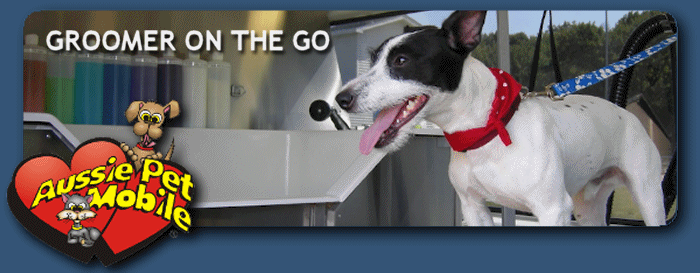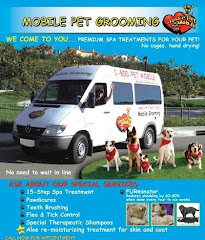In our grooming practice one of the biggest issues we come across with dogs is obesity. In fact, being a mobile groomer, we probably get more heavy dogs than a groom shop, because they are so difficult to transport. I guess the problem is a good one for our business, but in reality we would rather see healthy dogs than obese ones. Being over-weight usually leads to other health issues, and will take years off a dog’s life span. If owners realized over feeding their dogs mean shortening their lives, I wonder if they would change their feeding habits. Most people know when their dog is over-weight, but if you’re not sure, ask your vet. Usually if you can no longer feel the rib cage in a dog, it needs to lose weight.
Over-feeding your dog has a direct impact on their health. Obesity can lead to diabetes, heart disease, respiratory problems, osteoarthritis, digestive problems and some cancers. Experts estimate that about half of all dogs in the US are over-weight.
It seems most obese dogs are the result of being over loved. Often we show our affection for our dogs by giving them treats. Owners should know that treats should be limited, and that there are alternatives to regular dog treats that are much healthier and lower in calories. Just like with humans, calories are the main determination for weight gain. The good news is that we have direct control over how many calories our dogs get each day.
Instead of dog treats, try these alternatives recommended by my vet:
· Air-popped popcorn
· Raw baby carrots
· Plain rice cake, unsalted
· Raw or canned green beans
· Plain Cheerios
Or if you prefer dog biscuits, try the low calorie ones, like Eukanuba Canine Restricted Calorie Rewards, or Royal Canin’s Diet Canine Treats.
When you feed your dog at mealtime, measure the dog food in a small measuring cup. Make sure you know how much you are giving. If the dog continues to gain weight, reduce the amount. Experiment until you find what is right for your dog. That may or may not be what the dog food maker prints on their package. Not every dog is the same.
Settle on specific mealtimes for your dog, like once a day or twice a day. Never leave food out all the time. If your dog doesn’t eat right away, pick up the food and wait until the next scheduled feeding time to give more. Soon your dog will get used to the schedule and will eat their food at the right times. Regular meal times also make it easier for housetraining.
I’ve had customers tell me their dog must not be getting enough to eat because they “act hungry!” Of course your dog wants food whenever he can get it. Natural behavior is to eat what’s available. You as the human caregiver must understand what the dog cannot, that over feeding will almost surely lead to health problems and premature aging.
The best thing you can do for your dog is keep it in shape, with good feeding habits, exercise, and lots of attention. Your dog will be happy, and in turn you will benefit by getting to spend more time with your loyal companion.
Wednesday, August 26, 2009
Subscribe to:
Posts (Atom)


